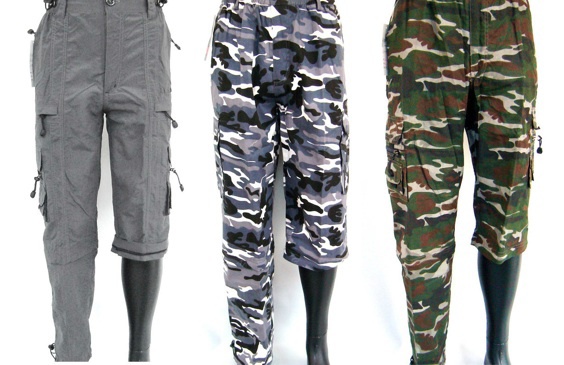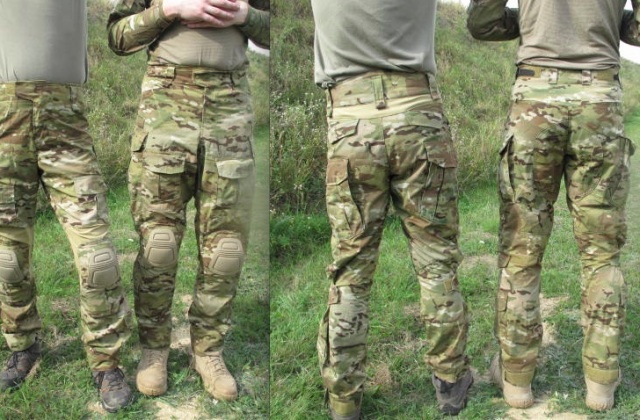Hol Dir den wöchentlichen SPARTANAT-Newsletter.
Dein Bonus: das gratis E-Book von SPARTANAT.

The Tactical Way of Lifestyle – Teil 2
In der Welt der taktischen Bekleidung sind Hosen, Unterwäsche, Kopfbedeckungen und Stiefel besonders verbreitet. Gebrauchte BW-Feldhosen und Leo Köhler Feldhosen sind zu finden. Hersteller setzen verstärkt auf Mischgewebe für Strapazierfähigkeit und Komfort. Die Farbwahl spielt eine wichtige Rolle, ebenso wie die Auswahl an Kopfbedeckungen. Camouflage ist nicht überall gesellschaftlich akzeptiert. Die Anforderungen an Unterwäsche überlappen sich in verschiedenen Situationen. Geeignete Kleidung sollte zum Stil passen, es sei denn, die Aufgabe erfordert etwas Anderes.
Wenn man sich etwas umschaut, entweder im Alltag oder auf Trekking/Geocacher-Foren, sind die am weitest verbreiteten „tactical“ Kleidungsstücke Hosen, Unterwäsche, Kopfbedeckungen und Stiefel. Grade die Anzahl der „Kampfhosen“ ist unzählbar und reicht von der gebrauchten BW Feldhose über Leo Köhler Feldhosen in 5FT oder schwarz und 5.11 bis hin zu Crye Gen3 Direct Action Pants.
Allerdings ist hier auch die Grenze nicht klar zu ziehen. Wo liegt der Unterschied zwischen der schwarzen Hose eines Fliesenlegers, der den Zollstock in der Messertasche hat, oder einer „normalen“ Trekkinghose, die viele Elemente aus dem militärischen Sektor übernommen hat?
 Klar zu Zeiten von Ebay und co. bekommt man gebrauchte militärische ausgemusterte Ware zu Spottpreisen (Zehn BW Feldhosen -> 2€) und diese versprechen vor allem eins: Robustheit, sowohl was den Stoff als auch die Nähte angeht. Leider ist diese „alte“ Kleidung meist nicht ganz so bequem, trocknet langsam und meist vergleichweise schwer.
Klar zu Zeiten von Ebay und co. bekommt man gebrauchte militärische ausgemusterte Ware zu Spottpreisen (Zehn BW Feldhosen -> 2€) und diese versprechen vor allem eins: Robustheit, sowohl was den Stoff als auch die Nähte angeht. Leider ist diese „alte“ Kleidung meist nicht ganz so bequem, trocknet langsam und meist vergleichweise schwer.
Das haben die Hersteller auch erkannt und setzen immer mehr auf Mischgewebe statt reiner Baumwolle, wobei sie die Materialen an den jeweiligen Zweck anpassen. Bestes Beispiel wären hier die Crye Hosen (u.) die z.B. Stretch an den weniger abriebgefährdeten Stellen einsetzen um Passform und Beweglichkeit zu erhöhen. Gleichzeitig werden Verstärkungen und Knieschoner an den stärker beeinflussten Stellen vernähen. Auch das Gewicht wird hierdurch optimiert.
Camo oder Unifarben? Ein wichtiger Aspekt von „tactical Gear“ ist die Farbe, das ist nicht zu verneinen. Die meisten Träger bevorzugen gedeckte Farben und wollen nicht wie ein Leuchtbaum in Neonfarben durch Wald oder Alltag laufen. Hier ist die Entscheidung auch wieder dem Einzelnen überlassen. Wenn man auf der Tour auch nochmal schick Essen gehen will macht sich evtl. eine ACU Hose in UCP nicht so gut wie eine einfache unifarbene Trekkinghose. Für den Naturfotografen/Beobachter oder jemanden der einfach lieber das Gegenüber zuerst sucht, mag ein passendes Tarnmuster jedoch auch eine Überlegung wert sein.
Grade in Wandergruppen wird man mit Tarnmuster auf der Kleidung doch immer noch etwas schräg angeschaut – je nach Gruppe –, hier macht sozial verträgliche Khaki/braun/Coyote Kleidung durchaus Sinn.
Ähnliches gilt für die Kopfbedeckungen … ob Basecap, Fleece Watchcap, Boonie, Anglerhut, Wintermütze o. ä. … Auch hier ist die Übersicht nicht klar zu halten. Man(n) nimmt eben was man braucht, wer unbedingt Schlaufen für Tarnmaterial oder Velcro für Patches benötigt, findet was sein Herz begehrt – sei es von Hazard4, 5.11, VauDe oder sonstigen Hersteller. Die Auswahl der Kopfbedeckung ist hoch komplex und verdient eigentlich ein eigenes Thema. Da der Kopf irgendwie das wichtigste Organ des menschlichen Körper ist, sollte man auch hier überlegen was man braucht, was man bereit ist auszugeben – und wie es zur Gesamtoptik passt.
 Bei der Unterwäsche überlappen sich auch die Anforderungsprofile: ob ich in der Truppe mit Weste und Rucksack marschiere, im Trekkingbereich wandere, im CQB Sprints hinlege oder privat Sport betreibe, die Aufgaben decken sich. Wobei im Militärischen evtl. noch 1-2 zusätzliche Anforderungen (IR Sicherheit, Feuerfestigkeit) zusätzlich gefordert werden.
Bei der Unterwäsche überlappen sich auch die Anforderungsprofile: ob ich in der Truppe mit Weste und Rucksack marschiere, im Trekkingbereich wandere, im CQB Sprints hinlege oder privat Sport betreibe, die Aufgaben decken sich. Wobei im Militärischen evtl. noch 1-2 zusätzliche Anforderungen (IR Sicherheit, Feuerfestigkeit) zusätzlich gefordert werden.
Sei es Netzunterwäsche aus Schweden, die das Unterkühlen bei minimaler Schweißaufnahme verhindern soll, die Compression Shorts eines Sportlers oder das High-Tech X-Bionic Shirt. Klar hat das Nachteile (grade wichtig für die holde Weiblichkeit) was die Optik angeht. Ein Under Armor Loose Fit Heat Gear Shirt mit X-Bionic Compression Short wirkt (meist) nicht so sexy wie ein netter Push-up und String, wenn frau Freitag Abend feiern (und nicht Survival trainieren) gehen will. Ansonsten greifen hier auch Militärs gerne auf „zivile“ Produkte aus dem Bereich Eishockey, Rudern etc. zurück, wenn es die Mission zulässt.
Ähnlich sieht es bei den Stiefeln aus … Meindl/Lowa/Asolo findet man auf „beiden Seiten“ wieder. Ebenso häufig sind die alten Bundeswehr-Kampfstiefel (seit die Wehrpflicht ausgesetzt wurde wieder eher weniger) bei Gartenarbeiten wieder zu finden.
Grade bei der Kleidung gilt: es muss zum Style passen, den man sich selbst verpasst hat, solange die Aufgabe nichts anderes erfordert.
Ob man unbedingt 1000D Cordura an den Knien einer Wüsten-Hose braucht oder leichteres, atmungsaktives 500D nicht auch reicht, ob alle Nähte Mil-Spec sein und mindestens dreifach vernäht sein müssen, muss jeder für sich entscheiden. Die Alternativen von zivilen Herstellern bieten hier ebenso ein breites Spektrum – sowohl in Camo als auch Unifarben.
HIER geht es zum ersten Teil des Artikels.
HIER geht es zum dritten Teil des Artikels
SPARTANAT ist das Online-Magazin für Military News, Tactical Life, Gear & Reviews.
Schickt uns eure News: [email protected]
Werbung
Hol Dir den wöchentlichen SPARTANAT-Newsletter.
Dein Bonus: das gratis E-Book von SPARTANAT.



